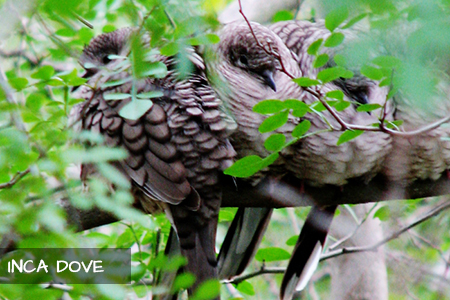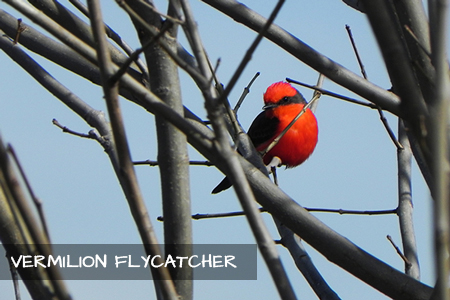Forget grackles and pigeons. When you opt for a WaterSaver garden instead of a lawn, you’re rolling out the welcome wagon for a fabulous flock of the fine feathered friends.
Locals are accustomed to the gaggle of grackles who stalk the fresh cut grass behind a lawnmower. Like pigeons and white-winged doves, these big ground-feeding birds specialize in the open habitats provided by a manicured lawn.

But with big, mulched landscape beds, your watersaver garden serves up an entirely different habitat — one with branches, perches, flowers and ground to walk on instead of grass — so you’ll inevitably see a change in the bird menu as well.
I considered it a good sign when my watersaver garden attracted a long-billed thrasher. Normally a resident of South Texas woods which spends its time tossing through mulch and leaf litter on the ground, it clearly had mistaken the dense jasmines and viburnums in my garden border for the spiny thickets of its home country. It revealed its presence to us by hopping up into a coral bean with a pig-like squeal and fixing its eye on me long enough to pose for pictures: a strange-looking creature, with ermine spots and an improbably dangerous-looking curved bill used for the aforementioned thrashing. We posed for selfies while our thrasher looked on.
On a spring morning, our thrasher would burst into an endless cacophony of weird phrases and chatter. Like its close relative the mockingbird, the thrasher is a mimic. But unlike its top-40 cousin, the thrasher never repeats; in fact it can wind through up to 1,000 phrases before it begins again. You may feel a little nosy listening to a thrasher wind through an entire conversation with itself, but it rarely seems to mind.
Like hummingbirds, Carolina wrens and redbirds, thrashers take advantage of the opportunities they find in the watersaver landscape. It’s not a migrant, but a resident. Ours built nests right under our noses: one high in a primrose jasmine, and a better one concealed in the skirt of brown leaves under a tall yucca.

One of the advantages of living with a watersaver garden instead of a lawn is that you actually get to know the individual birds who take up residence at close range, even without binoculars.


